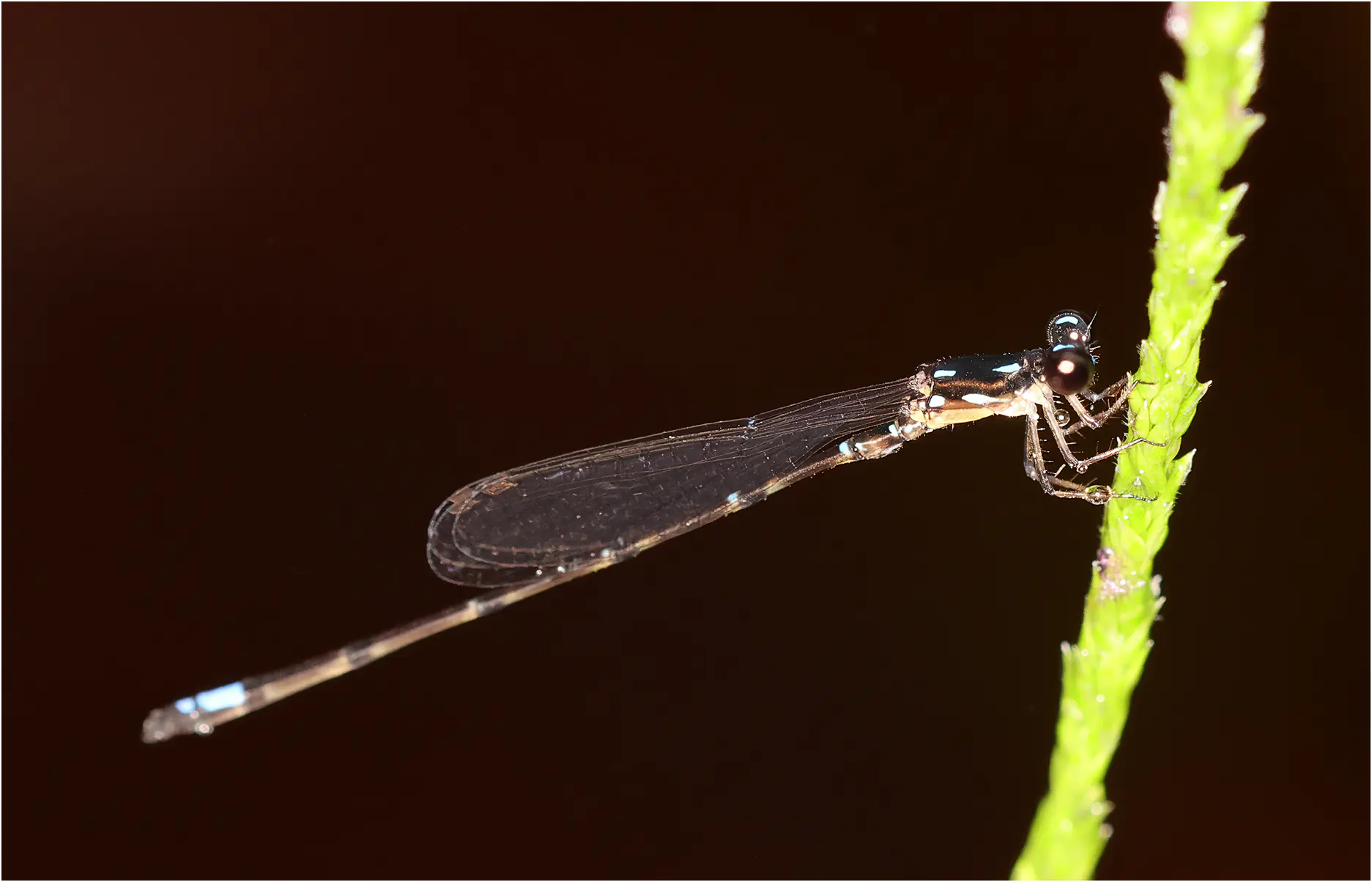
Unfortunately for him, this Mortonagrion indraneil male, Coenagrionidae, is one of the first photos of this prospecting trip; each time, I realize that the first shots are not good… It takes a few hours to get used to the light, or rather to the shade surrounding these odonates which often place themselves in a gap of light. Especially since a few minutes later, we had to take refuge
under a gazebo , undergoing one of the first heavy rains of the trip, which will include many.
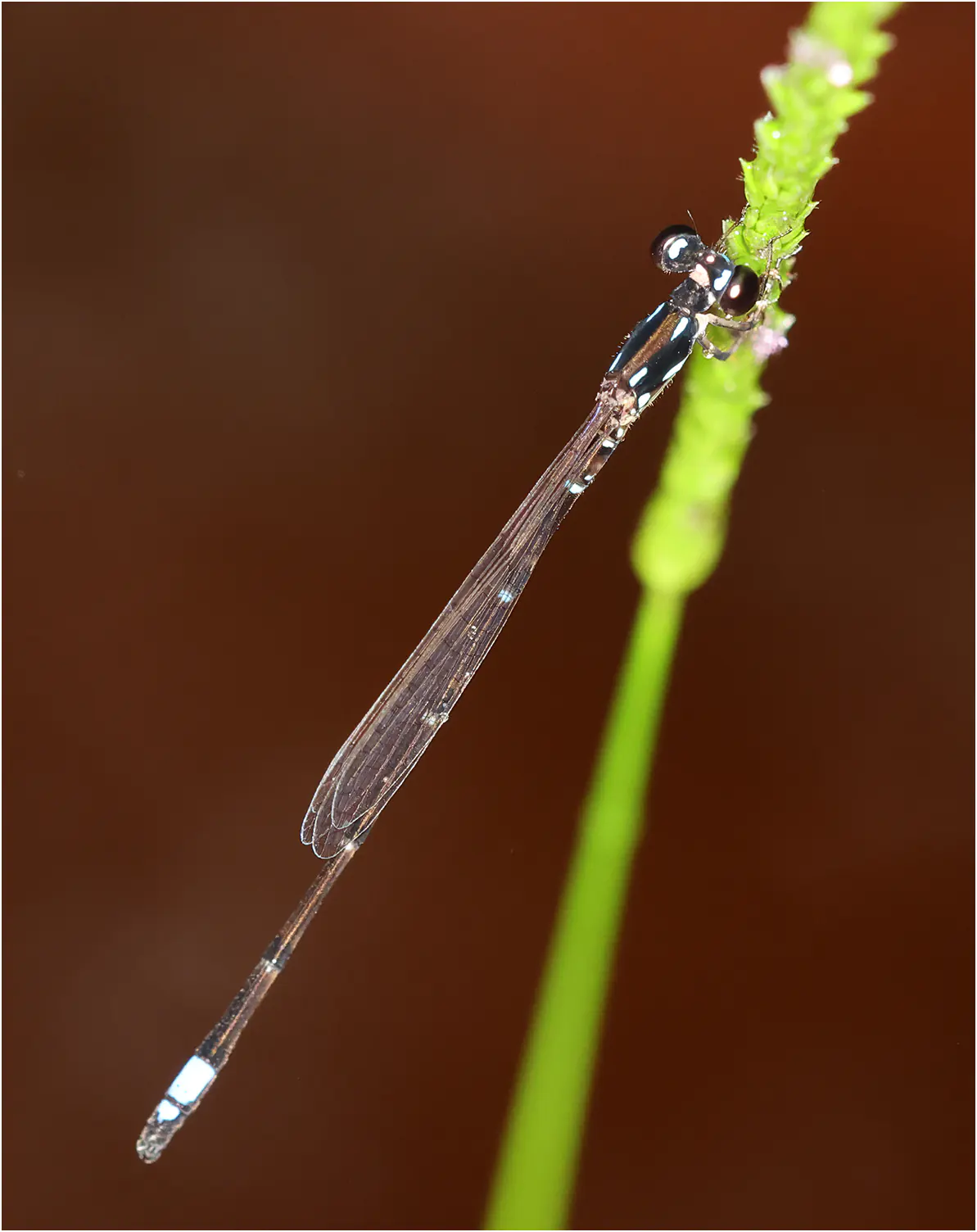
We met it in a park, in a flooded part of the forest; they are regulars of peat bogs, and we will later meet an immature female and a male in this very special environment.
Rory Dow (1) tells us that its abdomen measures 21.3 mm, or a total length of about 26 mm, which makes it a very small Coenagrionidae.
Moreover, its status, like that of other Mortonagrion remains uncertain, and some have navigated between Agriocnemis and Argiocnemis, the only notable difference (apart from anal appendages) is based on a detail of venation. None of the characters that define Mortonagrion are unique to this genus but they all have complex postocular spots.
Mortonagrion indraneil male, Malaysia, Sarawak, Sama Jaya Nature Reserve, 03/18/2025
Four other Mortonagrion have been described from Borneo (16 worldwide, one in Africa (!), one in New Guinea, the others in Asia), but none have exactly this thoracic pattern.
One of them was described in 2015, in a previously unexplored habitat type; it is very likely that other species of odonates will be discovered in these environments that were thought not to be suitable for dragonflies…
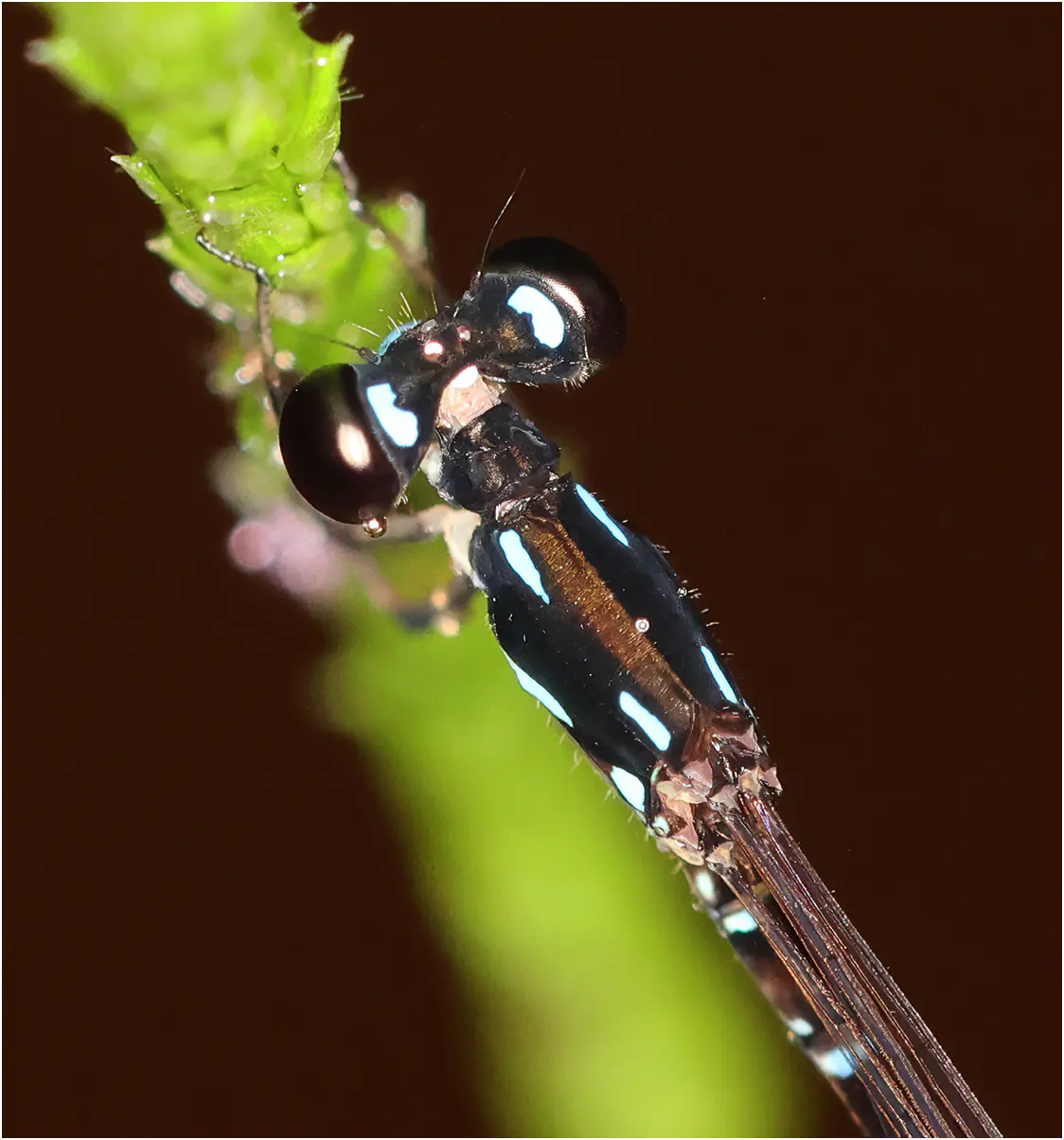
Females have precisely the same thoracic patterns, however they lack the postocular spot and blue coloration on S8 and S9.
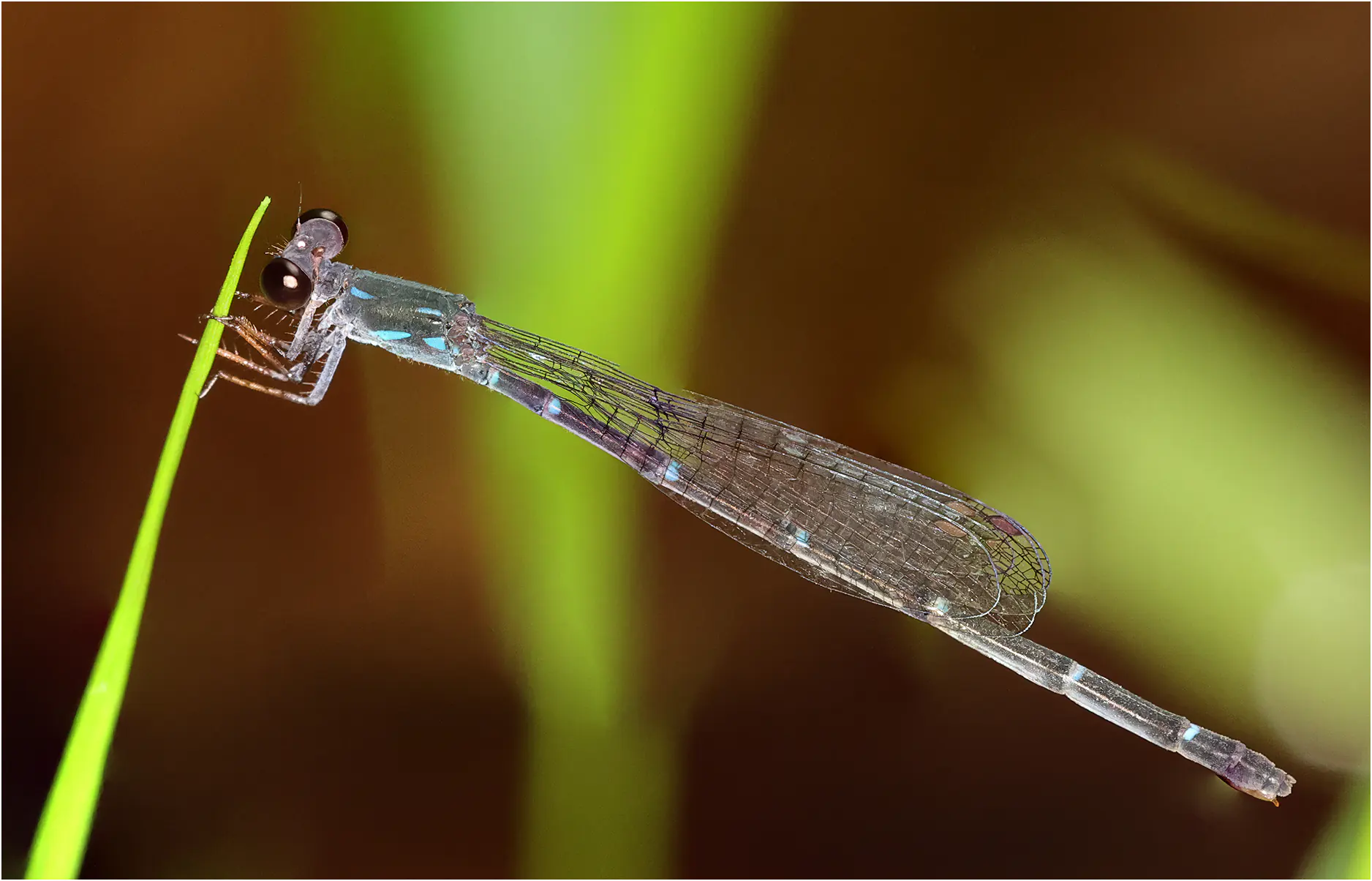
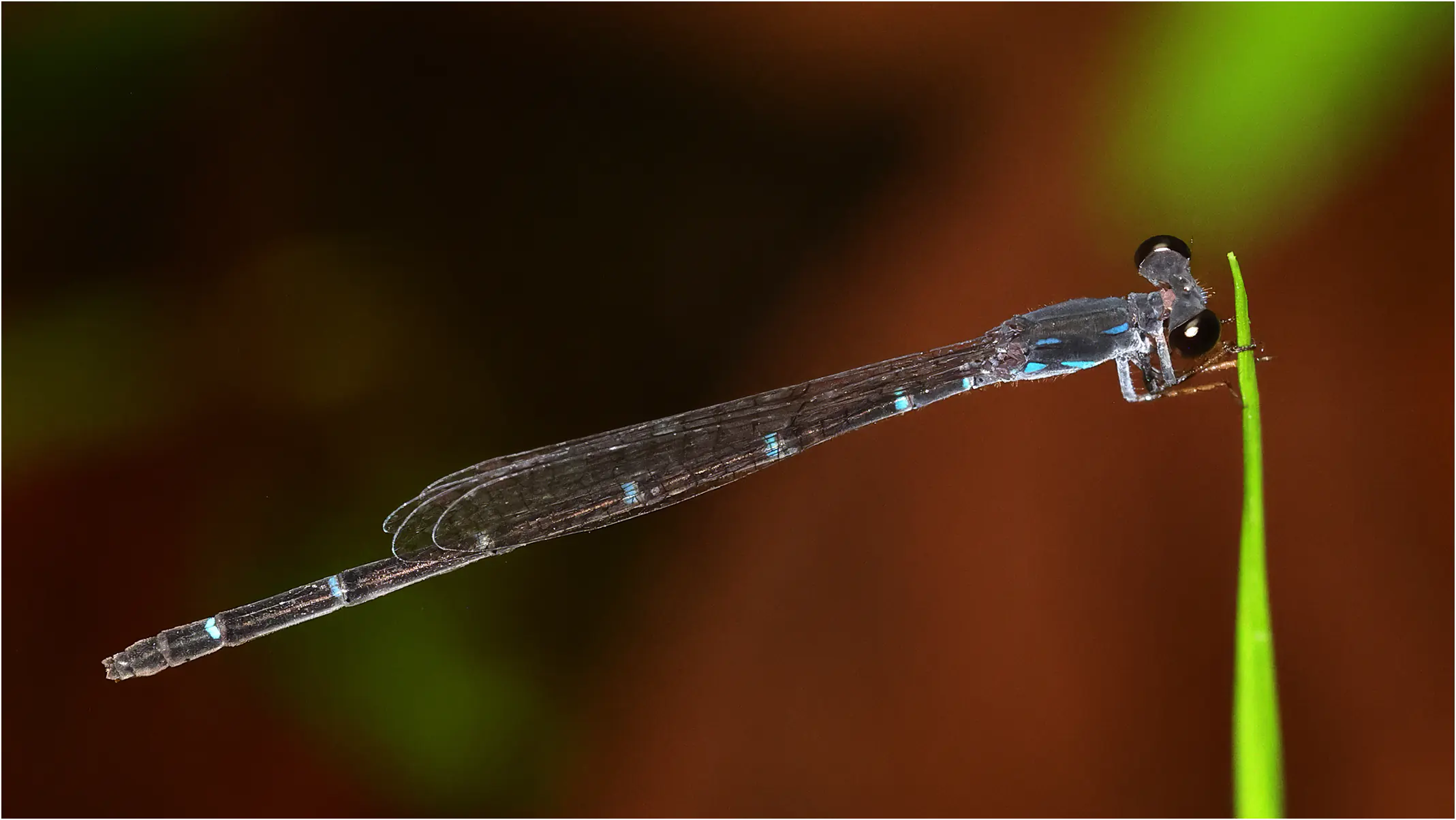
It is endemic to Borneo, restricted to Sarawak and Brunei, considered likely extinct in the far west of Kalimantan. IUCN Red List .
Finally, two magnificent immature females encountered when we progressed by boat in the peat bog of Maludam NP .
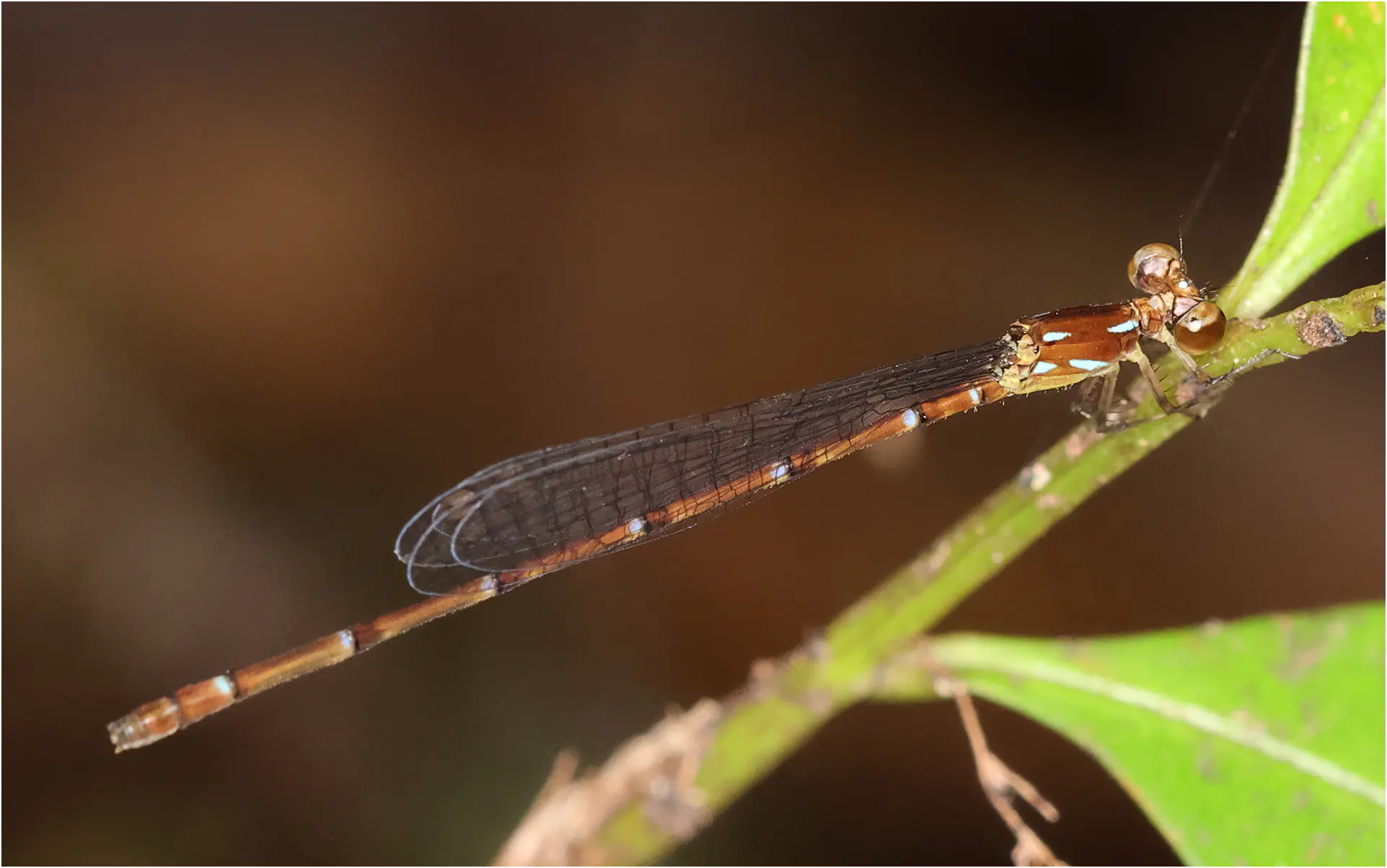
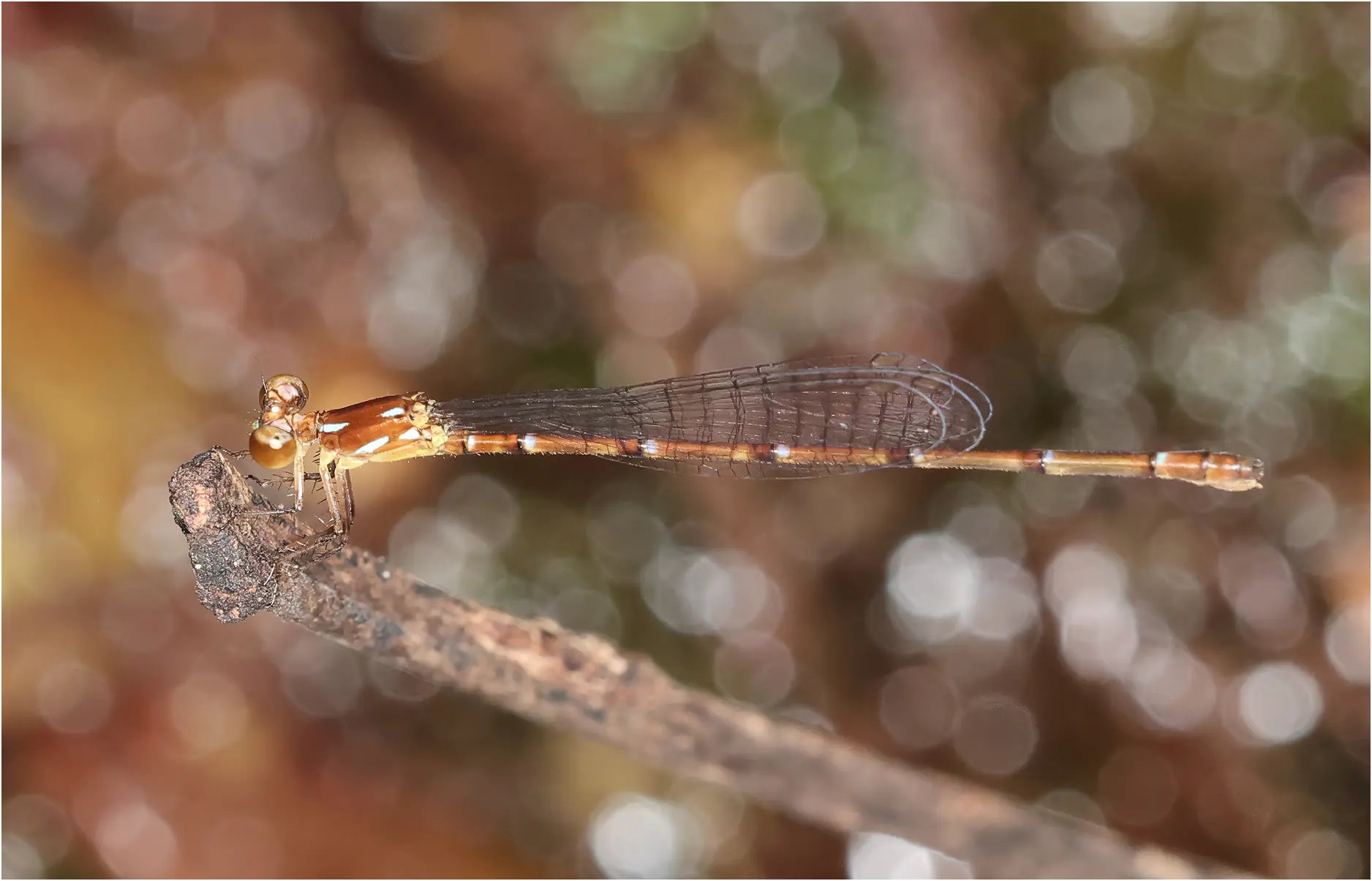
Etymology
Mortonagrion (Fraser, 1920) (3); Fraser paid tribute to Kennth J. Morton, a Scottish entomologist who showed particular interest in Neuroptera and Odonata.
Indraneil ; Rory Dow (1) explains that he pays tribute to Professor Indraneil Das, who first introduced GT Reels and the author to the swamp forest at UNIMAS (University of Malaysia and Sarawak) where the holotype was collected. Professor Indraneil Das is an Anglo-Malaysian herpetologist who works at the Institute of Biodiversity and Environmental Conservation, Universiti Malaysia Sarawak.
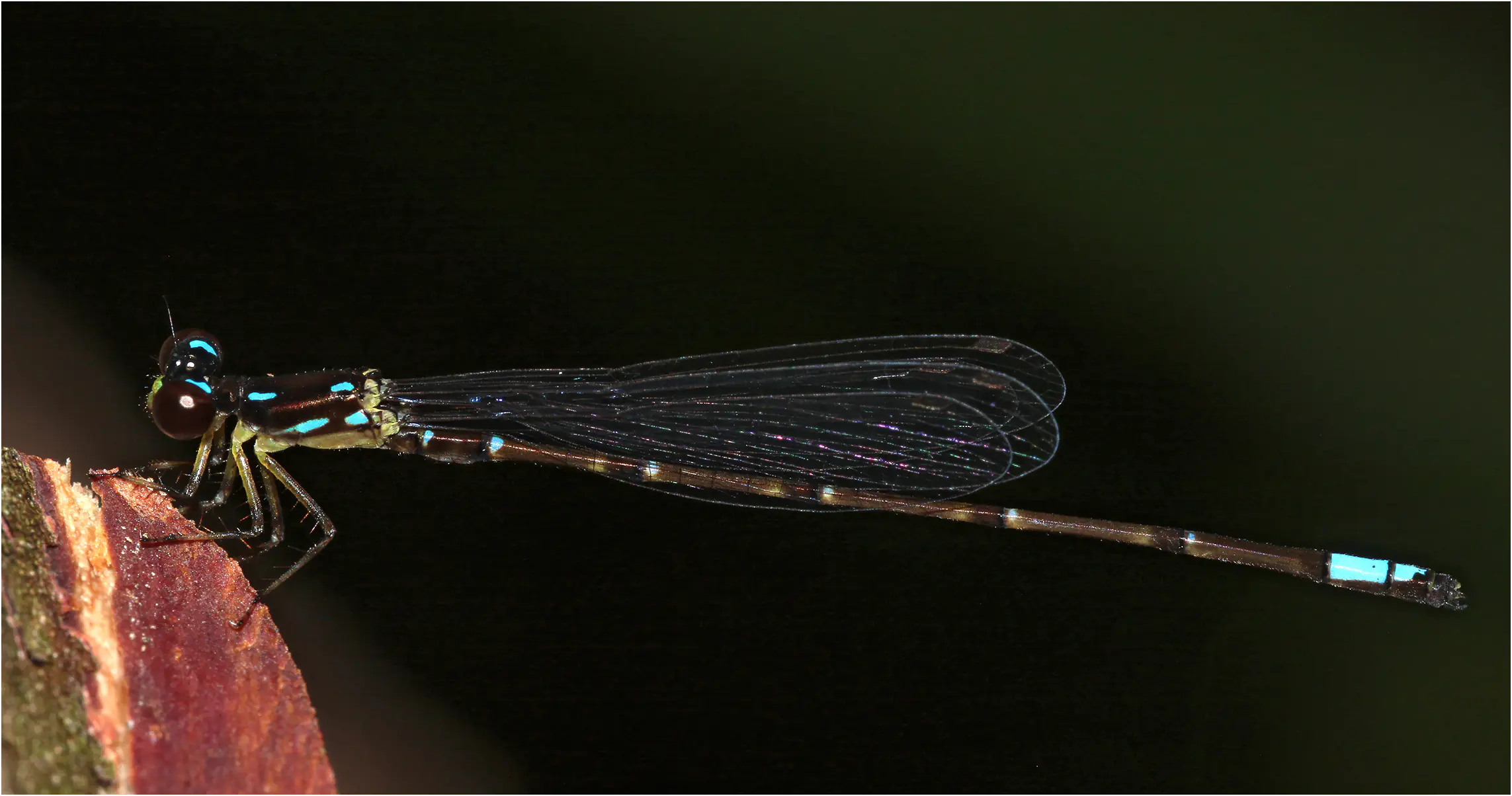
1- Dow, 2011 – Mortonagrion indraneil spec. nov. from Borneo, and a redescription of M. arthuri Fraser (Odonata: Zygoptera: Coenagrionidae) – Zootaxa 3093: 35–46 (2011)
2- Dow, 2021 – AN ANNOTATED CHECKLIST OF THE ODONATA (INSECTA) KNOWN FROM SARAWAK WITH RECORDS TO DISTRICT LEVEL – Sarawak Museum Journal · January 2021
3- Robin Ngiam & Marcus Ng – A photographic guide to the Dragonflies and Damselflies of Singapore – John Beaufoy Publishing – 2022